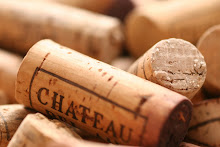 Which vintage of Chateau Mouton Rothschild offers the best quality to price ratio (QPR)? I looked at the modern vintages first: 2010 received 97 points from Wine Advocate (WA) and is available for future delivery at $700 (Premier Cru). 2009 is WA 99 and can be bought today for $900 (Gary's Wine Marketplace). It seemed that the market values modern great vintages of Mouton at $100 per WA point above 90. To if the pattern persisted with older vintages, I made a table of the top 8 vintages back to 1982:
Which vintage of Chateau Mouton Rothschild offers the best quality to price ratio (QPR)? I looked at the modern vintages first: 2010 received 97 points from Wine Advocate (WA) and is available for future delivery at $700 (Premier Cru). 2009 is WA 99 and can be bought today for $900 (Gary's Wine Marketplace). It seemed that the market values modern great vintages of Mouton at $100 per WA point above 90. To if the pattern persisted with older vintages, I made a table of the top 8 vintages back to 1982:| Vintage | Points | Price | Cost/Point over 90 |
| 2010 | 97 | $700 | $100 |
| 2009 | 99 | $900 | $100 |
| 2005 | 96 | $500 | $83 |
| 2003 | 95 | $400 | $80 |
| 2000 | 96 | $1150 | $192 |
| 1996 | 94 | $400 | $100 |
| 1986 | 100 | $750 | $75 |
| 1982 | 100 | $1000 | $100 |
For my money, the 1986 is the wine to buy. In absolute terms, it is cheaper than the 2000 and the 2009, both of which have lower scores. In relative terms, its cost per point is lower than any of the recent great vintages.
The 1986 Mouton Rothschild was not always a $750 wine. It traded at around $1000/bottle both in 2007 and 2011, so there is precedent for higher prices. I would expect prices on the older vintages to rise when the current group of 2009s and 2010s have been sold.








